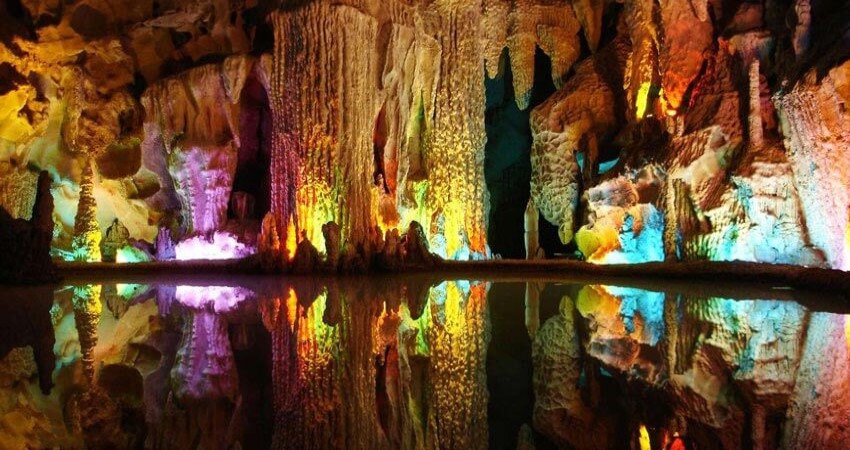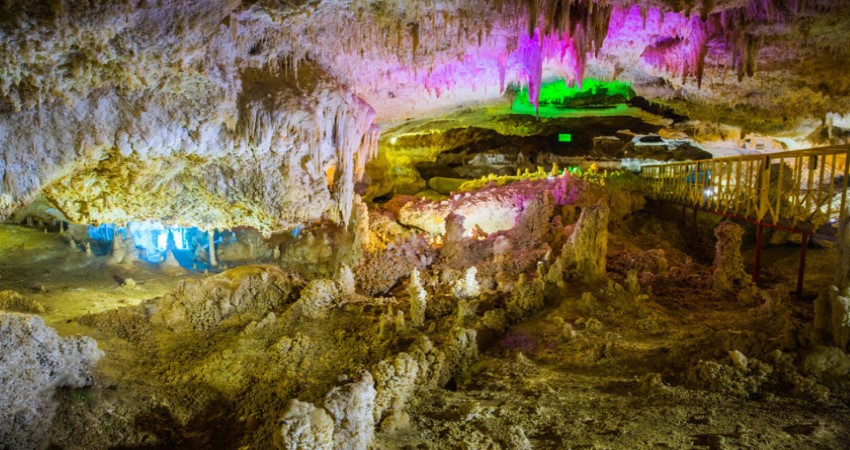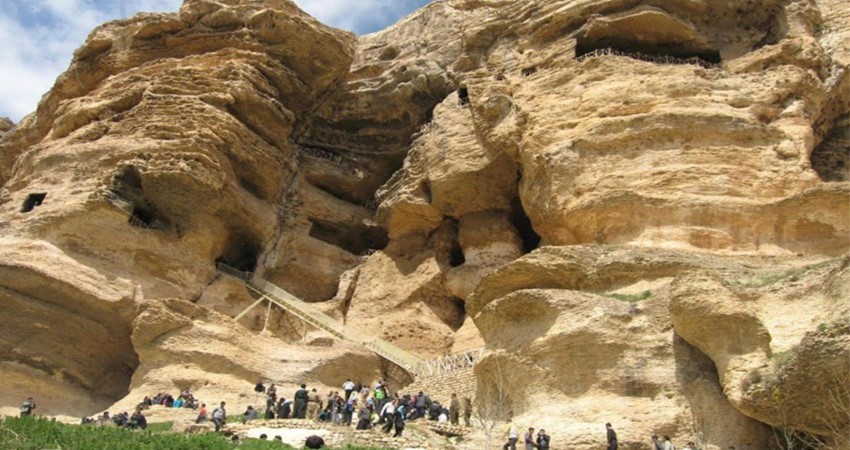The Best Caves of Iran

Abbasi Hotel Isfahan
September 18, 2020
Caravanserai in Iran
September 28, 2020The 3 best Caves of the Western Route in Iran
The western Iran route with its natural and historical attractions has become a new destination that attracts the attention of world travelers. Among these beauties, three caves are very important and are worth visiting for natural or cultural reasons.
These 3 best Caves in Iran offer spectacular landscapes which are extremely interesting for those who are experts in archeology and even for those who are not.

Alisadr Cave
Alisadr is 190 million years old and the largest water cave in the world. The cave is indeed a wonderful cave and one of the most unique and spectacular natural canoeing caves in the world, located in the village of Ali-Sadr in Kaboodarahang in Hamadan province.
A huge cave with complex mysteries, discovered in the 1950s, with a length estimated between 11 and 17 km, remains partially unexplored. So far, no animal life has been detected inside. A large lake in the middle that sometimes reaches a depth of 14 meters connects a large part of the cave.
Due to the high transparency of the water, you can see the colored stones underwater. It is, therefore, necessary to use the boat to reach its different parts. Among the cave’s finest exhibits are stalagmites (summaries) and stalactites (divers) shaped in various attractive and spectacular forms through different years, enticing all visitors. If you are a nature lover, you will be amazed when discovering its fantastic geological landscapes and the miracles of nature up close.

Katale Khor Cave
The most beautiful and mysterious limestone cave in the world, Katale Khor, lives up to its name: “the passage of the sun”, as it sits within a mountain, behind which the sun rises every morning.
Katale khor, located 150 km south of Zanjan, was discovered in 1921. At the time, access to the cave was almost impossible. Today, a 2,350-meter track is set up for visitors. Katale Khor is renowned for the quality and beauty of its geological curiosities as well as the number of its floors. It has 3 km of galleries open to the public, plus 4 km reserved for speleologists.
One of the peculiarities of the cave is the existence of immense lime columns formed by the junction of stalagmites and stalactites. in Katale Khor, animal life existed.
In addition, the discovery of ancient pottery, human skeletons, and those of a leopard and a fox, show that this cave was known and frequented. As we have mentioned, Katale Khor and Ali Sadr were formed at the same time, and have many geological similarities.

Karaftou Cave
Karaftou is located 72 km north of Divândareh, near the village of Youzbâshi Kandi. It is a four-story natural limestone cave with a depth of 750 m and sits in the rocks of a limestone mountain.
This cave would be inhabited from the beginning of Prehistory. The potteries have been found there dating from different periods, notably the Sassanid periods. Over time, its inhabitants modified the interior space of the cave to accommodate several rooms and corridors linked to each other.
The cave looks like a real labyrinth because of the corridors and rooms from different eras. Windows to the outside have also been carved into the rock. You can also see patterns engraved on the interior walls, mainly representing animals, plants, and men.
In addition, a Greek inscription at the entrance to one of the rooms on the third floor which says: “Heracles lies in this cave. May no impurity enter there!”, has led researchers to believe that this cave once served as a sanctuary. Its path is not difficult because there are metal stairs that facilitate the climb.
And the good news is you can have this collection of beauties in just one trip or integrated into a cultural tour including Iran’s UNESCO Heritage Sites and the other fascinating natural and cultural beauties and wonders. As you wish!
Our suggested itinerary:
Day 1: Tehran-Hamedan
Day 2: Hamedan-Lalehjin-Alisadr Cave-Kaboudarahang
Day 3: Kaboudarahang-Kataleh Khor Cave-Zanjan
Day 4: Zanjan
Day 5: Zanjan-Karaftou Cave-Saqez
Day 6: Saqez-Takht-e Soleyman-Tehran
